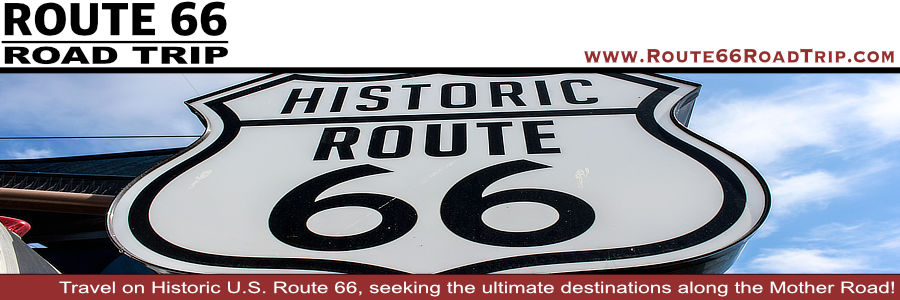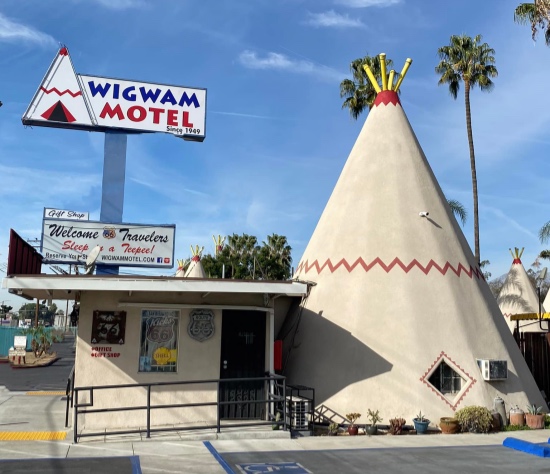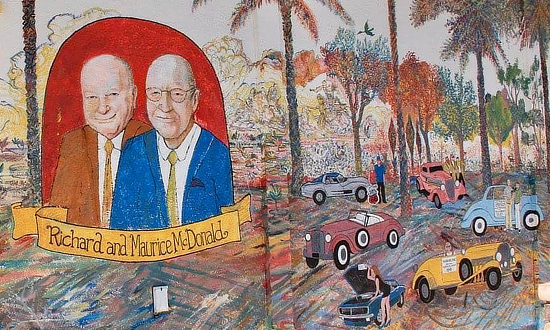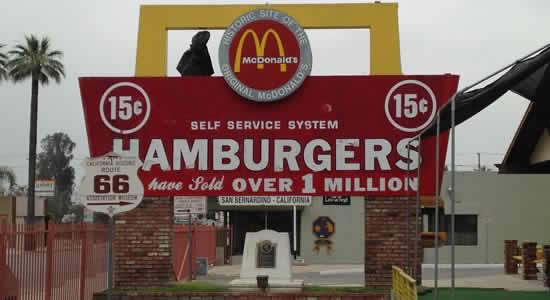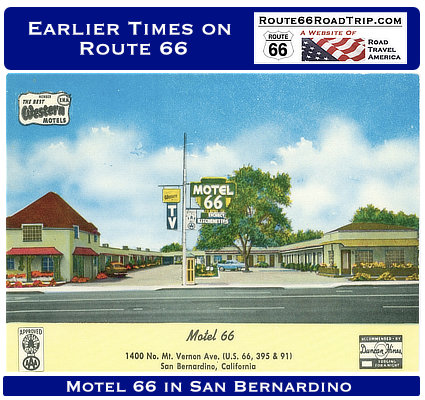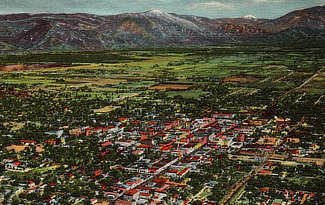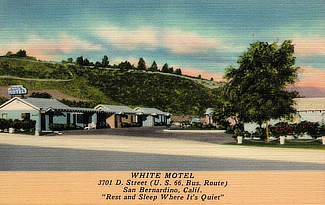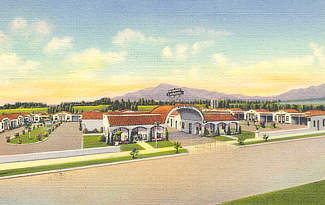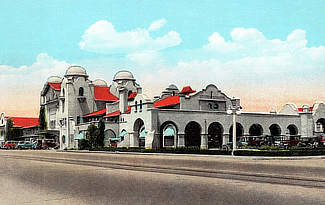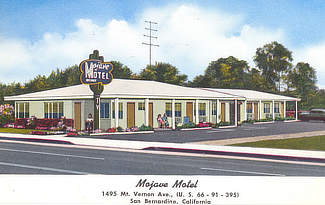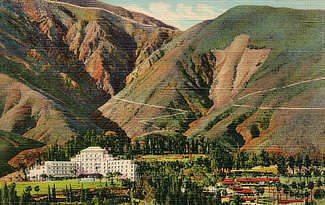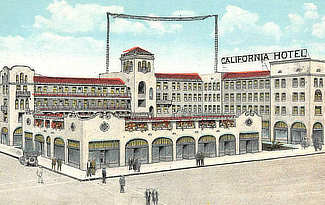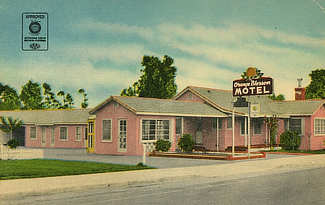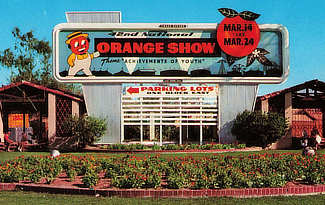Route 66 in San Bernardino California
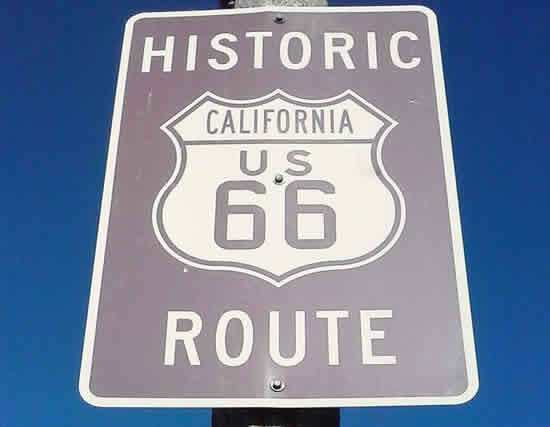 |
Route 66, the Mother Road, ran southwest in Arizona from Kingman through Cool Springs to Oatman, and onward to Golden Shores and Topock where it turned west to Needles, California.
From the Arizona state line to San Bernardino U.S. Highway 66 followed the old National Old Trails Highway.
Leaving Needles, the road ventured a bit north, through Goffs. This railroad town remained a stop on Route 66 until 1931, when a more direct alignment between Needles and Essex was opened.
The road then headed south, through Chambless and Amboy, and then west to Ludlow, Newberry Springs and on to Barstow. There it turned south and traveled through Helendale, Victorville, through the Cajon Pass, and on to San Bernardino.
Map showing the location of San Bernardino on Historic Route 66 |
About San Bernardino
The second-largest city in the "Inland Empire" and home to a stretch of the legendary Route 66, San Bernardino has long been the gateway to Southern California. Rancho Cucamonga lies to the west, and Riverside to the south. It is about 60 miles east of Los Angeles.
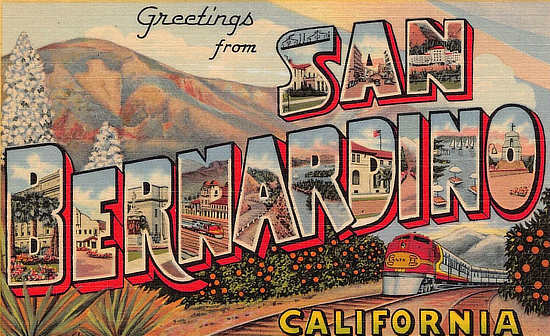 |
San Bernardino was named in 1810, when Spanish priest Francisco Dumetz led an expedition through the area. Traveling in covered wagons, Mormon pioneers descended through Cajon Pass in 1851 and settled at the base of the mountains. Later San Bernardino grew into a railroad town with the 1875 arrival of the Southern Pacific and later, the Santa Fe Railway.
Today, the restored 1918 Santa Fe Depot, a Mission Revival national historic landmark notable for its domes and towers, is home to the San Bernardino History and Railroad Museum, which tells the story of both the city and the railroad.
Starting in the 1920s, San Bernardino served as an oasis for travelers after their arduous journey across the Mojave Desert along Route 66, the 2,448-mile highway that connected Chicago and Santa Monica. Many motor courts and motels in San Bernardino gave overnight refuge to Route 66 tourists.
Just off Route 66, there’s more dining history at the site where the first McDonald’s opened in 1948. An unofficial McDonald’s museum founded by Albert Okura preserves a huge collection of early memorabilia.
San Bernardino is also home to an iconic Route 66 landmark, the Wigwam Motel, where you can sleep in a 32-foot-tall concrete teepee. Among the most photographed of all Route 66’s roadside attractions, San Bernardino’s Wigwam was built in 1949 and is one of only two of these “Wigwam Villages” that survive from the highway’s heyday.
Attractions and Things to Do in and around San Bernardino
While in the area, Route 66 visitors enjoy many attractions in San Bernardino, including the following:
- Mojave Desert
-
Mitla Cafe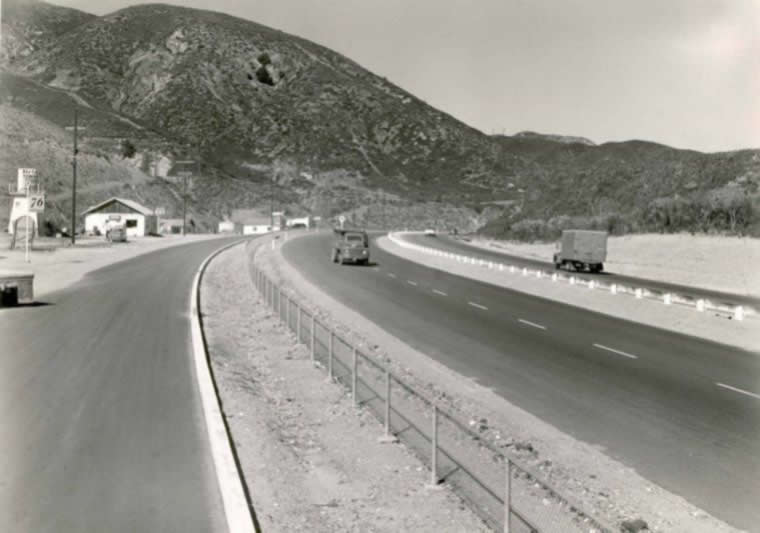
Earlier days of Route 66 through Cajon Pass ... the highest point on CA Route 66. The pass is located between the San Bernardino Mountains and the San Gabriel Mountains
- McDonald's Museum
- San Bernardino National Forest
- Wigwam Motel
- Cajon Pass
- Kelso Depot
- California Theatre of the Performing Arts
- Robert and Frances Fullerton Museum of Art
- Rim of the World Scenic Byway
- Deep Creek Hot Springs
- Santa Ana River Trail
- San Bernardino History & Railroad Museum
- Lake Arrowhead
- Big Bear Lake
- Glen Helen Regional Park
- National Orange Show
Scenes Around San Bernardino, California
Kelso Depot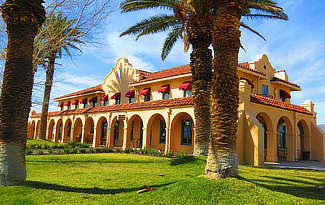 |
California Theatre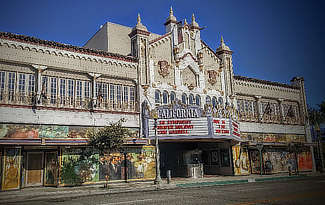 |
Lodging, Dining and Attractions in San Bernardino ... from TripAdvisor
|
San Bernardino Hotel Directory, Traveler Reviews and Reservations San Bernardino Travel Guide |
Wigwam Motel No. 7Driving down Route 66, this San Bernardino motel immediately grabs your attention with its one-of-a-kind roadside architecture. In 1933 Frank Redford started developing the Wigwam “Villages” by designing teepee (tipi) shaped motel units. This was the last of seven Wigwam Motels built across the country; only three survive today. The others are located in Holbrook AZ and Cave City KY. This one was opened in 1949, and remains open today at 2728 E. Foothill Boulevard, and welcomes travelers to "sleep in a teepee". This motels remains a unique and whimsical accommodation option with modern tee-pee guest rooms and first-class amenities. The property features free WiFi, a free parking, tea and coffee in the lobby, a refreshing outdoor pool, an around-the-clock front desk, non-smoking rooms, pet-friendly rooms, daily housekeeping and an on-site gift shop. Website of the Wigwam Motel or phone 909.875.3005
|
|
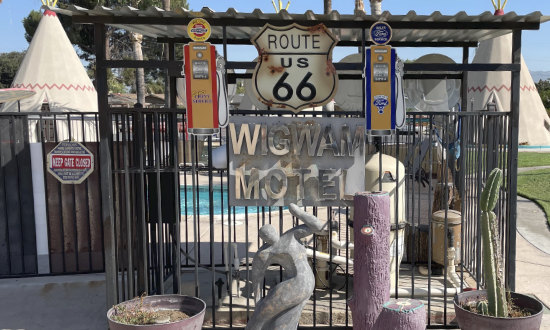 |
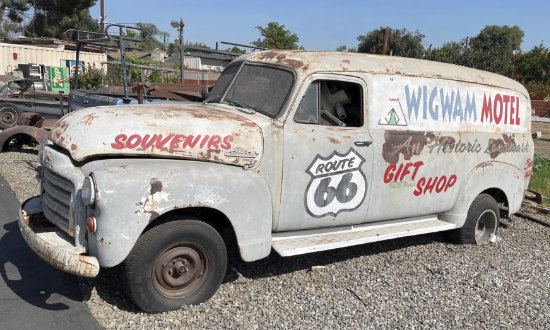 |
The Original McDonald'sNot far from Route 66 in San Bernardino is the site of the original restaurant of fast-food giant McDonald's. A local fast-food franchise company now owns this site and has turned it into a museum, at 1398 North E Street. The museum features an array of memorabilia, menus, toys and other McDonald's artifacts. Also, there is a mural of Richard and Maurice McDonald (below). Admission is free.
|
|
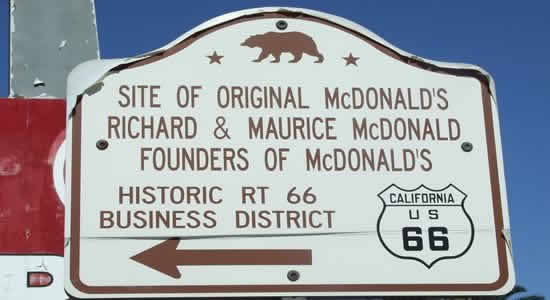 |
|
Interactive Map of San Bernardino, California
More Information About San Bernardino |
|
Earlier Times on Route 66 in San Bernardino
We have included below a sampling of our collection of vintage travel postcards dealing with San Bernardino and Route 66. What was Route 66 like in its earlier years, as visitors drove around and across San Bernardino? What did all the service stations, motels and public buildings look like when they were new? What did the traveling public experience on the Mother Road? We wonder such things when we travel Route 66 today. Those earlier times in the 1930s, 40s and 50s were not always captured on film. But the use of colorful postcards was common in those decades. These portray the historic road in its prime and help us to visualize, and appreciate, "earlier times" as we drive Route 66 today across San Bernardino. |
||||||||||||
|
MORE CALIFORNIA ROUTE 66 |
||
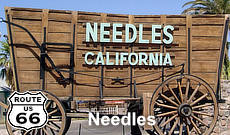 |
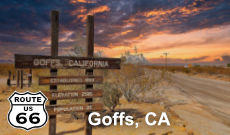 |
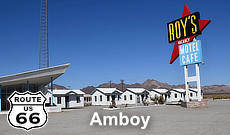 |
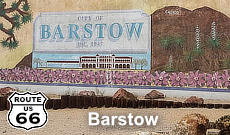 |
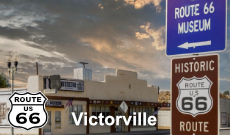 |
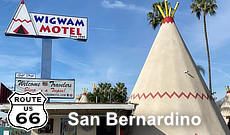 |
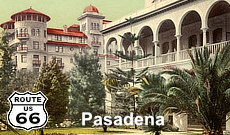 |
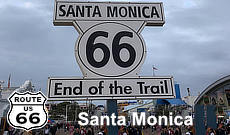 |
|
